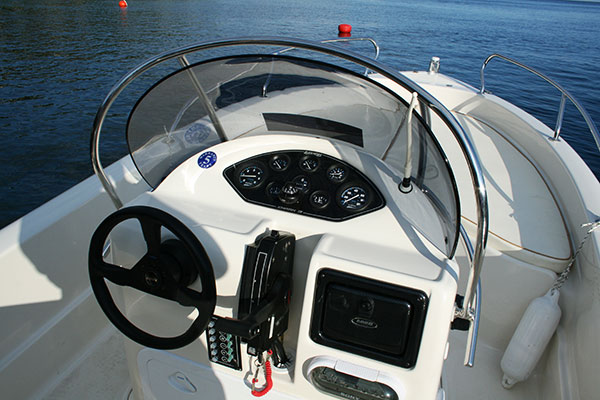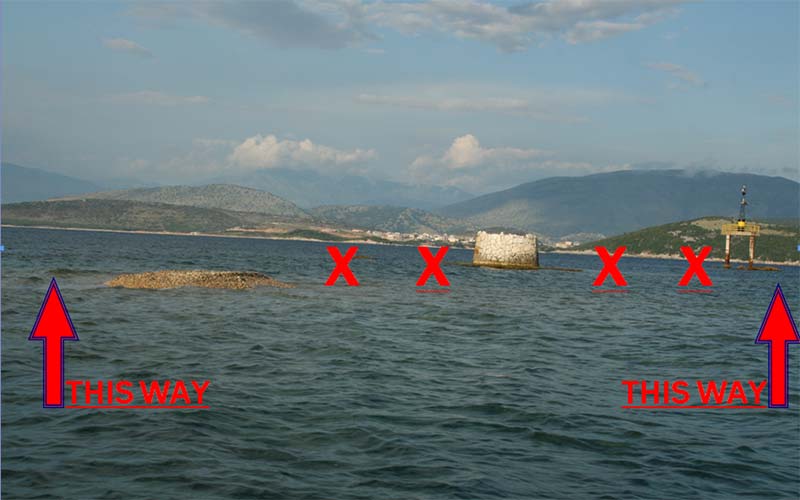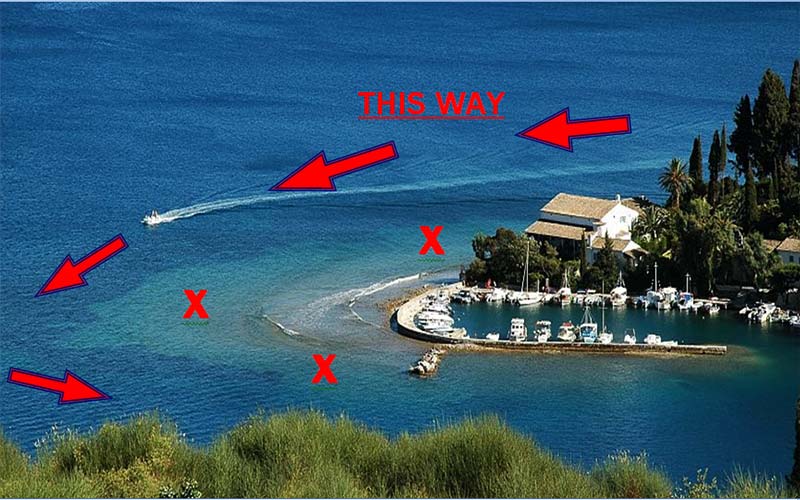HOW TO OPERATE A MOTOR BOAT
Full tuition is given by our experienced staff on the collection of the boat, however we are pleased to present you the operating guide of a motor boat
- Check the fuel.
- Lifejackets and complete statutory lifesaving equipment and first aid kit are stored in the locker.
- Insert the key in the lock and stop in position.
- Press trim in down position until the engine descend and the propeller enter into the water.
- While the boat is still tied up, put gear into neutral and start the engine.
- When the engine works at idle, untie the rope and put into the boat.
- Pull in your anchor and its rope into the boat.
- Put into reverse and clear 20-30 m before turning.
- Put gear in neutral position. Turn the steering wheel to your way.
- Press and put the red lever on the front, putting first gear.
- When the boat is moving at speed, you must keep a distance of 200 m from the shore.
- Keep a lookout for and keep clear of shallow water areas.
- Approach your destination from 100 m slowly. Put the gear into neutral at approx. 15-20 m from the shore.
- Throw the anchor in the sea from the back of the boat. Keep anchor rope out of the propeller.
- On arrival, tie the forward rope to the jetty or shore and pull the anchor line tight, to check the anchor has caught, and tie it to the boat. If leaving the boat for some time slacken the forward rope a little to let the boat lie clear of the jetty.
- Turn the engine off and put it in the tilt position. When tying up to a beach try to leave the boat with at least 1,5 m of water underneath. When the big waves from a passing ship come in your boat will be safe and not hit the shore or get swamped.
- Keep within the area limits to ensure a quick and safe recovery service if necessary.
- Watch for changes in the weather. Return to base if unsure. If the wind becomes strong please take down the sun canopy.
WHAT TO DO IF:
Emergency Telephone Number: +30 6982810660
ENGINE STOPS AND WON’T RESTART
- Check the fuel line is free.
- Check petrol tank – if it is empty fill the tank with the emergency supply and call the emergency number.
- Check there is not air in the fuel line and check the cap on the petrol tank is not too tight.
- If the engine still won’t start drop anchor – if anchor line is too short tie on the forward rope. Failing this , use umbrella anchor located in the forward locker as this will slow down drifting.
- If the engine still won’t start, rig your oars; pull up your anchor and telephone emergency number.
- If life is in danger or there is nothing else you can do, use the flares in the container in the forward locker to signal for help.


YOU LOSE YOUR ANCHOR OR THE ANCHOR IS STUCK
- If you have lost your anchor take note of the spot and call the emergency number. Do not continue your journey without the anchor.
- If your anchor is stuck, untie the anchor rope from the boat and tie on a marker (anything that will float). Call the emergency number.
IF YOUR BOAT IS SWAMPED (FULL OF WATER)
Bail out the water with the bucket and sponge. Call the emergency number.
IF YOU RUN AGROUND OR DAMAGE YOUR PROPELLER
- Call the emergency number.
- If there is a small hole in the boat it can be plugged with a piece of cloth or a plastic bag. It is best to push this into the hole from the outside if possible.
- If there is a big hole pull the boat as far up the beach as you can. Call the emergency number.

IF YOU RUN INTO BAD WEATHER
Watch for changes in the weather. Return to base if unsure. If the wind becomes strong please take down the sun canopy.
If the sea gets rough put on your life jackets located in the forward locker and return to the nearest safe harbour and phone us with your location.


